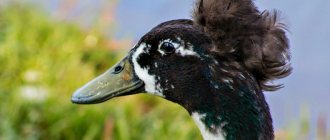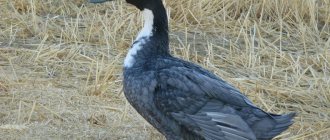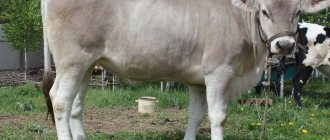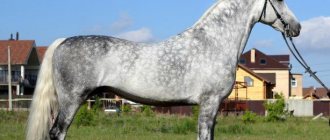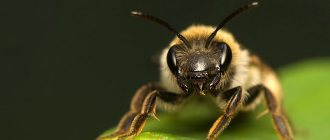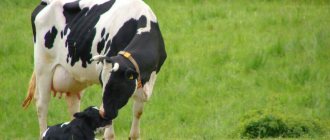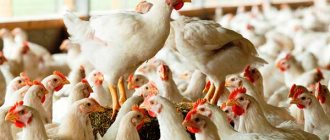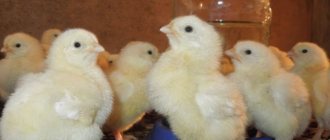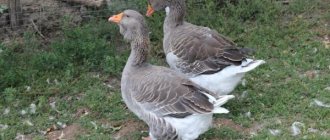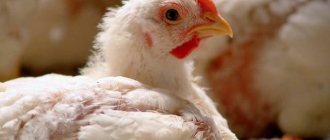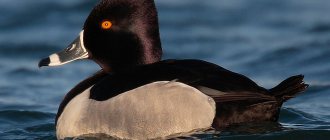Bashkir Colored ducks are considered one of the most successful achievements of domestic selection in the field of poultry breeding. The breed is distinguished by early maturity, decent productivity, unpretentiousness and high quality meat, which makes it especially attractive to farmers, as well as owners of small individual farmsteads.
Bashkir ducks (pictured) are autosexous - they have pronounced differences in the color of the plumage of males and females
Let's take a closer look at these interesting farm birds.
History of breeding
These birds were obtained by accident at the beginning of the 21st century. At the Blagovarsky breeding plant, which is located in Bashkortostan, breeders worked to improve the Peking duck. As a result, hybrids were accidentally obtained that showed high productivity.
Ducklings with dark feathers uncharacteristic of Peking birds were selected and then bred among themselves. The adult Bashkir duck showed its best side, and therefore received rapid distribution and official recognition.
How to distinguish the sex of ducklings?
To optimize the cost of maintaining Bashkir ducks, it is necessary to properly assemble the flock. Males are fattened for meat. The females are left to produce eggs. It is advisable to determine the sex of ducklings as reliably as possible from the first days of life.
This can be done within a day from the moment of birth, by examining the inner surface of the chick’s cloaca. As the bird grows older, it actively resists such inspection.
You can distinguish a drake from a duck by other characteristics:
- By behavior. Drakes always stay behind, letting the females go ahead. In addition, they stand out from the crowd due to their increased activity and pugnacity.
- By voice. Male Bashkirs do not know how to quack. The hoarse sounds they make are more like hissing.
- By plumage. Drakes have a bright appearance. Females are much more modestly colored.
- According to the shape of the tail. The feathers on the tip of the tail of the drake Bashkir duck are curled. Females do not have this feature; all tail feathers are straight.
Description and characteristics of the hybrid
Bashkir ducks are quite massive. They have a dense, knitted body, powerful paws and multi-colored plumage. There are two color varieties: khaki and black white-breasted. These ducks move easily even on snow and ice.
Appearance
In various photos of Bashkirs you can see that they have a bright color. The first type is the black white-breasted duck. Such a bird is considered more productive. Their main color is dark, almost black, and the feathers on their chest are always white.
The second type is khaki. These ducks are very similar to their wild relatives in their color. Their feathers are gray-brown and variegated. In males, the head is painted black with a greenish tint, and there is a light rim on the neck.
The legs of Bashkir ducks are strong, large, and light orange in color. The head is slightly flattened, the neck is short, but gracefully arched.
REFERENCE! The color of the beak depends on the main color of the duck. In light individuals it is orange, in dark individuals it is yellow-brown.
Character
Bashkir ducks are quite calm. They get along well with the other inhabitants of the house and are not afraid of even large animals. Because of this, they are very popular among farmers.
How to distinguish gender
Determining the sex of ducks or ducklings is not an easy task for novice poultry farmers. There are several signs thanks to which even an inexperienced owner can understand the gender of his Bashkirs.
Bashkir ducks older than three months can be distinguished by the following characteristics:
- Tail . In drakes (males), the feathers on their tail begin to curl into a ring. In ducks they are smooth, without curls.
- Voice . A characteristic feature of males is that they never quack. Drakes make hissing sounds. You can check this by holding the bird in your hands. The ducks will immediately begin to quack, and the males will hiss.
- Size . As a rule, drakes are slightly larger and more massive than females, but this may also depend on the characteristics of a particular duck.
The sex of day-old ducklings is determined by their larynx. On the first day after hatching, the chick is picked up and the chest is carefully felt with your fingers. The head must be moved slightly to the side and the beak raised.
When pressing with your index finger on the chest, you can feel a triangle, in the center of which the drakes have a 4-5 mm tubercle. Females do not have such a tubercle.
INTERESTING! Professional poultry farmers can determine the sex of their ducks by their genitals. In this case, the bird is placed belly up on its knees and the feathers are spread apart in the cloaca area. When pressed, a rudimentary process (penis) is visible in males, and two round growths are visible in females.
Diseases
Bashkir ducks have stable immunity. If you follow the rules of care and feeding, you don’t have to worry about the health of the birds. Poultry also gets sick.
List of common diagnoses:
- Avitaminosis. The disease is associated with a deficiency of vitamins and minerals. The plumage is thinning, the ducks become lethargic, eat poorly, and do not gain weight.
- Cloacite. Inflammation of the mucous membrane of the cloaca due to a deficiency of vitamins A, E and D, microelements.
- Prolapse of the oviduct. Severe diarrhea is replaced by prolonged constipation, digestion is disrupted.
You should also be wary of infectious diseases in the poultry yard:
- Aspergillosis . Fungal disease. Most infected ducklings die, and the clinical outcome for adults is favorable.
- Bacillary white diarrhea. This is a salmonella infection. Newborn ducklings are more likely to get sick and die 3 days after infection.
- Rhinitis. A runny nose infects the entire school and is quickly transmitted from sick ducks to healthy ones.
- Typhus. A disease of adults; ducklings are extremely rarely affected. Breeders isolate infected birds and slaughter them.
- Viral hepatitis. Ducklings up to 2 weeks of age are prone to the disease. Infection occurs from a sick individual - through feces, food and water.
- Coccidiosis. The disease develops when the rules for keeping ducks are not followed, and is especially dangerous for babies under 2 weeks of age.
Read more about common duck diseases here.
Disease Prevention
Despite a strong immune system, it can also fail. To maintain the health of the duck and the size of the school, follow these preventive measures:
- Disinfect the room before moving the ducklings.
- Ensure bedding is dry, clean and fresh.
- Carry out preventive vaccination of ducks according to age.
- Relocate the sick duck in a timely manner, otherwise it will infect the entire school.
- Monitor the freshness of food and drink, introduce new food ingredients according to age.
Poultry productivity
Ducklings of the Bashkir breed gain weight very quickly. By the month they weigh about 2-2.5 kilograms. These colorful ducks are versatile. Males can be raised to produce large marketable carcasses, and females will produce a lot of tasty edible eggs.
Egg production
The peculiarity of the breed is its high egg production. It is believed that black and white ducks are more productive. Such a female produces from 210 to 260 eggs per year. The egg production of wild or colored ducks is slightly lower - from 200 to 230 pieces. The average weight of an egg varies from 60 to 80 grams.
Ducks begin to lay their first eggs at 4.5-5 months. The highest productivity remains in the first couple of years of life.
Carcass weight
By slaughter age (3-4 months), the Bashkir duck gains about 4-5 kg of live weight. This means that the net weight of the carcass is 2-2.5 kg. The peculiarity of Bashkirs is their gray-yellow skin color. The carcasses are not fatty, but there is a thin layer of fat between the skin and meat.
Owner reviews
Irina, 37 years old, Moscow region
I’ve been keeping “Bashkirks” for several years. I have no complaints about them. They grow quite quickly, the quality of the meat is excellent, and they produce a lot of eggs. We eat ourselves and sell both. There is always demand. Ducks are quite voracious (how could it be otherwise), but they are not very noisy, calm and not capricious. They don’t yell around the clock like other breeds, they don’t run around in a panic in crowds, they recognize their owners. Beauties and cleanliness. By all indicators I am satisfied.
Nikolay, 42 years old, Tula region
I like this breed. I keep families of both main colors. The birds are beautiful, clean, not scandalous. They begin to lay eggs relatively early, there are a lot of eggs, and the fertilization is good. The last one is especially important for me: I organized extra income by selling day-old ducklings. I prefer to hatch in an incubator so as not to depend on the whims of the hens. There are a lot of chicks at once, all even and strong. The demand for “colored” babies is almost always higher than for white ones. But the “Bashkirs” have a stable hatch and a high survival rate. It is enough to keep the parent families separate from other ducks, and the preservation of breed qualities is ensured.
Alexandra, 51 years old, Krasnodar region
I used to have both “Beijings” and “Agidels”. To be honest, I'm tired of white ducks with too fatty meat. I started a “Bashkir” and couldn’t be happier. In addition to being decorative (and this is also important), they are distinguished by a surprisingly calm character. If it is possible to drive them to a pond, in the summer they are not a problem at all. I usually slaughter the fattening herd at 4 months, when they moult. In factories they are sent “for meat” at two months old, but in your own backyard, and with walking, you cannot achieve such intensive fattening. But almost all of them grow up to 4 kg, and the carcasses come out to about 3 kg each. I leave 2 families for the winter (3-4 ducks per drake). There were no difficulties with withdrawal for several years. An excellent breed for a village farmstead. I recommend it to everyone.
Specifics of maintenance and care
The Bashkir duck is very unpretentious, however, when moving into a poultry house, you should adhere to planting standards. No more than 3 adult birds can be housed per square meter. If the ducks are cramped, they will sort things out, eat poorly, and reduce egg production.
Basic principles of poultry house arrangement
Here are the main principles that should be followed when equipping a poultry house:
- Temperature . Ducks can overwinter in a cold room, but the more comfortable temperature for them varies from 0 to +15 degrees.
- Light . Bashkir ducks do not require very bright lighting, but they cannot live in the dark either. The length of daylight hours can be adjusted only for mature ducks aged 7 months or older. During the winter months, light is left on for 12-14 hours to ensure that the females continue to produce eggs.
- Litter . The main rule is that the floor must be dry. The bedding must be changed as it becomes dirty, otherwise the Bashkir duck may catch a cold.
- Nests . They must be placed on the floor. The size of each nest is at least 40*40 cm. Two ducks can fly to one place.
- Ventilation . Bashkirs love to create dampness, so it is necessary to equip the poultry house with forced ventilation. With high humidity, the walls can become covered with fungus and mold, which is dangerous for ducks.
Once or twice a year, all surfaces in the poultry house are treated with a lime solution in order to destroy parasites. Also, as a preventative measure, you can light a sulfur bomb indoors once a year.
What kind of bedding should I put in the poultry house?
The main requirement for litter is high absorbency. The best options: sawdust, shavings, straw, peat. Deep litter is preferred for ducks. In cold weather, it will hum and warm the room, and it also perfectly absorbs excess moisture.
Feeders and drinkers
Both feeders and drinkers must be selected taking into account the age and size of the ducks. For watering babies, it is better to use low containers in which they cannot drown. Low basins or deep and stable plates are perfect.
Bunker feeders are made for grain or mixed feed. They are suitable for ducklings during the period of active growth (up to 4-5 months). It is better to give adult Bashkir ducks food in portions and in limited quantities, otherwise they may become fat.
Drinkers can be vacuum or open. In the first case, the water remains clean longer, but then it is necessary to provide the Bashkir duck with access to a small pond or bathing container.
IMPORTANT! Water in open drinking bowls (basins, buckets, troughs, etc.) is renewed as it becomes dirty.
Duck walking area
Bashkir ducks need regular walks. To do this, a pen is attached to the poultry house, which can be fenced with a simple net. During the warmer months, ducks spend the entire day walking. In winter, they can be released if the temperature does not drop below -15 degrees.
In the walking area it is necessary to install hut houses in which the ducks will hide from rain or snow. It is recommended to use a mixture of sawdust and river sand as bedding. It is also necessary to install a bathtub in the pen.
Caring for an adult bird
Here are the basic rules for caring for adult Bashkirs:
- regular cleaning of feeders and drinkers;
- compliance with feeding standards;
- properly composed diet;
- daily replacement of water in drinking bowls;
- monitoring the condition of the litter (if it becomes dirty, replace it or add a fresh layer).
It is very important to ensure that there is no dampness or drafts in the room. Ducks rarely get sick, but if kept in a cold and drafty barn on a damp bedding, they will catch a cold and stop growing and producing eggs.
Caring for ducklings
Bashkir colored ducklings are very hardy, but in order for the livestock to grow strong and healthy, certain conditions must be met during the first 4-8 weeks of life. The main factors on which the growth rate and health of babies depend: temperature, light, nutrition, watering.
The ducklings are kept in boxes or brooders for 10 days. You can use paper, diapers, large shavings or hay as bedding. The room temperature in the first 5 days of life is from 28 to 30 degrees. From day 6 it is lowered to 25 and by two weeks it is brought up to 18-20.
In the first days, the light in the room is on around the clock, then daylight hours are reduced to 14-17 hours, depending on the age of the chicks. For up to 2-3 months, ducklings should have free access to food.
From 2 weeks, babies can be offered a shallow bath with warm water for bathing. Ducklings are allowed outside from the age of 14 days, but the air temperature outside must be at least 18-20 degrees.
Shedding
The first or juvenile molt occurs at 70-80 days of age. It lasts about 2 months. During this period, ducklings change their covering feathers. Then the Bashkir duck molts twice a year: in early summer and autumn.
Summer molting lasts from May to July (60 days). First, the tail and flight feathers are changed, and then the small feather is replaced.
Autumn molting lasts from August to October. It is slightly shorter than the summer one (from 50 to 55 days). During it, only small feathers and tail feathers are replaced.
INTERESTING! During the molting period, ducks sharply reduce or completely stop egg laying, but after it ends they begin to lay eggs again as before.
Secrets of cultivation
Ducks tolerate low temperatures well (within reasonable limits, of course). They can suffer greatly from the heat. Watch the behavior, here is a hint in order to understand when the temperature in the coop needs to be lowered:
- the beak is open;
- lack of interest in food;
- drink often and a lot;
- wings lowered.
Another point is to ensure that the bedding in the duck room or cage is fresh and dry. Waterfowl splash water heavily, the litter moves, and microorganisms multiply in it. Ventilation and airing should be draft-free.
Conditions for productive keeping of the Bashkir duck
Duck diet
The composition of the diet and the amount of daily allowance depend on the age of the bird and its focus. Ducks that produce eggs need protein feed. Fattening birds are not limited in food. And ducklings need a complete and balanced diet to grow well.
Ducklings feeding
The best option for feeding small ducklings in the first few weeks of life is a complete starter feed (feed intended for chicks can be used, but not for broilers).
Bashkir ducklings grow well on natural products:
- fresh cottage cheese (it is better to use rustic cottage cheese made from whole milk);
- boiled crushed eggs from domestic chickens or ducks;
- a mixture of kefir, bran and boiled cereals (millet, rolled oats, etc.);
- a small amount of boiled potatoes;
- greens (especially green onions).
If the diet is compiled independently, it is recommended to additionally give the chicks premixes containing vitamins and minerals necessary for growth. They are added to food, strictly adhering to the norm.
Feeding an adult duck
Adult ducks are fed 2-3 times a day. Laying hens are given more protein food (fish or meat waste, meat and bone meal, etc.). The basis of the diet is a grain mixture (from 50 to 90 g per day per duck).
Adult Bashkirs willingly eat greens, vegetables and fruits in large quantities. Also added to the menu are bran, shells, and some boiled potatoes.
REFERENCE! As the main diet, you can use ready-made complete feed intended for laying hens.
Rules for watering birds
Bashkir ducks need a constant supply of drinking water. An adult bird consumes up to 600-700 ml of liquid per day. Water is poured into vacuum drinkers or other containers. It must be changed regularly as it gets dirty.
Diet for summer and winter
In the summer months, up to 55% of the total daily diet comes from succulent food (greens, fresh vegetables, etc.). Concentrates are reduced to 40-45%. These include any grain and finished feed.
During the winter months, ducks are switched to mash. They are prepared from warm broth, skim milk or other nutritional liquids, bran, grain mixtures, and animal feed. They also increase the amount of potatoes in the diet.
Feeding
Adult Bashkir Colored ducks should receive food three times a day (in the absence of grazing). For 1 kg of weight gain, 2.7 feed units are consumed. In the morning and at lunchtime, wet mash is usually placed in the feeders, and in the evening - dry food mixture. The latter contains corn, barley, peas, wheat, bran, yeast, and chalk. It is useful for birds to feed sprouted grains and root vegetables. If there is no greenery on the walking area, the owners provide the livestock with freshly cut grass.
For the winter, silage is prepared by putting grain legumes, beets and carrots along with tops, corn stalks with young cobs and other crushed raw materials into tubs. The containers are hermetically sealed, the cracks are sealed and the product is left to mature for a couple of months. Adults eat about 250 g of silage per day. This accelerates growth and increases egg production. Fine gravel is required for normal digestion.
Breeding Bashkir ducks
You can breed Bashkir ducks at home. Ducklings are obtained both using an incubator and under a hen. However, poultry farmers note that very few adult Bashkirs sit down to hatch eggs.
Before breeding, the parent stock should be properly formed. Up to 4-5 females are placed with one male. It is not recommended to mix breeds in one room during the breeding period if the goal is to obtain purebred stock.
With a hen
Females of the Bashkir breed do not sit down to hover eggs very often. However, if the duck does sit down to hatch her ducklings, she should be provided with all the necessary conditions. Be sure to check how many eggs are in the clutch.
IMPORTANT! It is recommended to leave from 7 to 15 eggs in the nest, depending on the size of the duck itself.
The incubation period lasts from 27 to 29 days. During this time, the female should not be disturbed. Containers with clean water and food are placed near the nest, since during the brooding period the ducks almost never leave the clutch.
Incubator
When hatching ducklings using an incubator, it is necessary to strictly adhere to the temperature and humidity conditions. Incubation period is 26-28 days.
| Incubation days | Temperature (degrees) | Humidity in % | Number of turns per day | Cooling |
| 1-7 | 38-38,2 | 70 | 4 | — |
| 8-14 | 37,8 | 60 | from 4 to 6 | — |
| 15-25 | 37,8 | 60 | from 4 to 6 | 2 times 20 minutes |
| 26-28 | 37,5 | from 85 to 90 | — | — |
For convenience, it is recommended to choose an incubator that has an automatic turning function, since duck eggs need to be turned up to 6 times a day.
In recent days, it is very important to actively moisten the shell in order to soften it a little. This will make it easier for the duckling to hatch.
Instructions for selecting eggs for incubation
Duck eggs intended for incubation are selected according to the following criteria:
- weight (80 g is considered ideal);
- freshness (they are stored for no more than 5 days at a temperature of 8 to 13 degrees, while turning them up to 3 times a day);
- quality of the shell (it should not have growths, chips, cracks or other damage).
Duck eggs are not washed, so it is better to choose cleaner ones. However, before storing, they should be wiped with a weak solution of manganese for disinfection purposes.
Basic mistakes when breeding ducks
Bashkir ducks are quite easy to breed, but beginners can make some mistakes:
- unbalanced diet (the duck may become fat and stop laying eggs);
- incorrect quantitative ratio of males and females;
- frequent change of environment (causes stress in the duck);
- violations during the selection of eggs for incubation (cracks, heavy dirt, double yolk, etc.).
Before you start breeding chicks, you should familiarize yourself with the peculiarities of breeding waterfowl, including the Bashkir duck (selection of eggs, incubation periods, temperature, humidity, etc.).
Origin
This breed was obtained in Bashkiria at the Blagovarsky breeding plant. They were bred from individuals with mutant genes, which were obtained during selection experiments with the Peking breed. These birds differed from the original ones not only in the dark color of their plumage, but also in other characteristics, for example, they were more beautiful and strong. They served as the basis for obtaining a new breed. The purpose of Bashkir colored ducks is for breeding in small personal and industrial farms, the direction is meat and eggs.
Health of the Bashkir bird
Ducks belonging to the Bashkir breed get sick very rarely, however, they can also become infected with viral or bacterial infections from wild birds or animals. Also, all waterfowl with access to water bodies are susceptible to helminth infection.
Diseases of ducks and ducklings
There are three groups of diseases: infectious (contagious), parasitic (caused by helminths or other parasites) and non-infectious (non-contagious).
| Group | Name | Symptoms | Treatment |
| Infectious (contagious) | Pullorosis | Feces in the form of liquid white foam, lethargy, refusal to eat, fever, exhaustion, frizz | Taking antibiotics (furazolidone or chlortetracycline) mixed with food |
| Viral enteritis (duck plague) | Lethargy, refusal to eat, runny nose and eyes, thirst, drooping wings, diarrhea | Mortality rate 90 to 100%, no treatment | |
| Aspergillosis | Diarrhea, cough, cramps, wheezing, beak foam, lethargy | Nystatin, solution of manganese or potassium iodide in water | |
| Salmonellosis (paratyphoid) | Weakness, diarrhea, unsteady gait, pus in the eyes, sticky eyelids, fever, convulsions (duck falls on his back) | Antibiotics (biomycin, furanisone or tetracycline) in food | |
| Colibacillosis | Yellow-green liquid stool, blue beak, thirst, refusal to eat, apathy | Antibiotics (tetracycline, biomycin) | |
| Cholera (pasteurellosis) | Swollen leg joints, beak leakage, green or yellow bloody diarrhea, fever, wheezing | There is no treatment; dead ducks are not eaten. | |
| Non-contagious | Cloacite | Decreased egg production, redness of the cloaca | The cloaca is washed with furatsilin solution and lubricated with tetracycline ointment. |
| Goiter Qatar | Stretching of the neck, swollen crop, beak odor, restlessness | The duck is turned over and the crop is massaged, emptying it, then fed liquid food for 2-3 days | |
| Esophageal blockage | Ruffled, hard goiter | Surgical opening and clearing of goiter | |
| Yolk peritonitis | Decreased egg production, lethargy, refusal to eat, gluing of fluff at the cloaca | The duck dies, there is no treatment | |
| Poisoning | Cramps, vomiting, poor appetite, thirst | Drinking activated carbon, enemas | |
| Cannibalism | Pecking relatives, plucking feathers | Aggressive ducks are removed and patients are treated with antiseptic | |
| Ammonia blindness | Running nose and eyes, poor growth | Adding vitamin A and carrots to your diet | |
| Parasitic | Helminths | Lack of egg production, poor appetite, exhaustion | Albendazole for 3 days |
IMPORTANT! To determine the type of disease and subsequent treatment, you must consult a veterinarian. You cannot carry out diagnostics yourself, since an incorrect diagnosis can lead to the death of the entire herd.
Disease Prevention
Prevention of infectious diseases depends on the specific disease:
- Pullorosis . The premises and equipment are disinfected with bleach or caustic soda, surfaces are whitened, litter is removed and burned.
- Viral enteritis . Ducks are vaccinated with serum, the litter is burned, and sick individuals are destroyed and burned.
- Aspergillosis . Install ventilation, check the feed for mold, and inhale potassium monochloride.
- Salmonellosis . Dead ducks are burned, disinfected, and yeast and fish oil are added to the feed.
- Colibacillosis . They carry out disinfection and administer antibiotics in prophylactic doses.
- Cholera. They vaccinate ducklings, disinfect and treat the poultry house against insects.
Prevention of non-communicable diseases is carried out as follows:
- Cloacite . Alfalfa is added to the feed and the amount of animal feed is reduced.
- Goiter catarrh . Small pebbles and large pieces of food are excluded from the diet.
- Blockage of the esophagus . Make sure that there is no large debris in the ducks’ access area.
- Yolk peritonitis . The ducks are often allowed to walk in the sun, vitamins are added to the diet, and wet cleaning is carried out.
- Poisoning . Avoid contact of ducks with any poisonous plants and chemicals.
- Cannibalism . Add protein feed to the diet and ensure regular exercise.
- Ammonia blindness . Maintain normal humidity and microclimate in the poultry house.
In order to prevent infection of ducks with helminths, it is necessary to completely exclude their contact with wild animals, as well as regularly carry out treatment for parasites.
Secrets of experienced farmers
To ensure that keeping the Bashkir breed gives maximum results, use the advice of professionals.
Your pets should not be too hot. Especially in dry summers. Birds cannot tolerate heat. Signs of overheating: constantly slightly open beak, lack of appetite, frequent drinking, drooping wings.
A mandatory requirement is dry and clean bedding in the poultry house. She preps quickly because ducks' feet are always wet after bathing.
Avoid drafts when ventilating a room with pets.
Do not overfeed Bashkirs, because they are prone to rapid weight gain.
When mating, large drakes with signs of obesity need only fertilize one or two females and no more.
